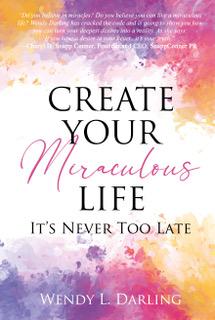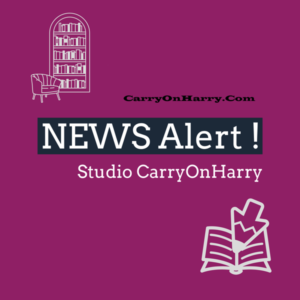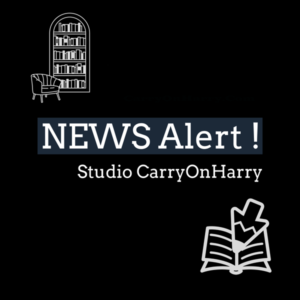Interviews
Book Talks with Author Sthitaprajna Debadutta Kar | New Book Release Muffled Screams of Buriganga

Studio Carry On Harry [ Interviews with Authors ] in talks with Book Talks with Author Sthitaprajna Debadutta Kar . Good occasion being New Book Release “Muffled Screams of Buriganga” . Today in this interview session he is about to introduce his book to us and shares his journey as an author. He is also going to share his writing process and will share some tips for new authors .
 Tell us about yourself. Who you are where you come from. Few things that define you ?
Tell us about yourself. Who you are where you come from. Few things that define you ?
I am a marketing professional from Odisha, India. I love listening and telling stories. If I have to define myself I would be similar to ‘Veera’ of “The open window” by Saki. I am a voracious reader. I love reading, literary works ranging from Tintin to Tolstoy and Archies to Archer have captivated me for years. The only ambition I have is to write till I can hold the pen or type and hopefully, I can have an audience for whatever I write.
What made you a story teller ?
I was fortunate to be born in a family where literature was a way of life. From my early childhood, I was surrounded by books. We have always been a family of voracious readers. So, writing looked like a natural progression. Writings were not only encouraged but celebrated in my family. I started writing small stories and poems when I was in school. I even edited my family magazine, while still in my teens. I have always had a vivid sense of imagination but lacked the confidence to articulate it. Once my early writings got appreciation from peers and family members, I got the confidence to pen bigger essays.
What are qualities that an author should have to write well ?
An author must have a vivid sense of imagination, receptive eyes, and a love for storytelling. But like any other facet of life, a disciplined approach can make one’s writing tasks easier. one has to create small goals for himself and try to achieve them. This way he can get motivated to write every day. One must read a lot. He should read at least 100 pages before even start writing a page. Then he must practice the craft, after all, only practice can make one perfect. As Stephen King would say “If you want to be a writer, you must do two things above all others: read a lot and write a lot.”
How do you construct ideas into books. Tell us Journey of your Books how they travel from just a thought all the way to store ?
 Ideas are sourced from events and happenings around you. A small event somewhere can ignite an Idea. You need to have a receptive, open mind to receive it. Ideas also germinate from what you read. The more you read and the variety of literature you read, goes a long way in the formation and development of an idea. Once I have a basic sketch of the story and the primary protagonists are fixed, other things fall in line. I try to write as much as I can keeping the scope of the story in mind. Nearly 30% of what write gets edited in the 2nd draft. Once I have finished the first draft, I give it to 10-15 people to read. I read it at least five times myself. I take their feedback constructively and change the draft accordingly. After the 2nd draft, I send it to a friend of mine who is an English teacher for proofreading and grammatical correction. After I get the corrected manuscript in hand I contact publishers and the rest follow.
Ideas are sourced from events and happenings around you. A small event somewhere can ignite an Idea. You need to have a receptive, open mind to receive it. Ideas also germinate from what you read. The more you read and the variety of literature you read, goes a long way in the formation and development of an idea. Once I have a basic sketch of the story and the primary protagonists are fixed, other things fall in line. I try to write as much as I can keeping the scope of the story in mind. Nearly 30% of what write gets edited in the 2nd draft. Once I have finished the first draft, I give it to 10-15 people to read. I read it at least five times myself. I take their feedback constructively and change the draft accordingly. After the 2nd draft, I send it to a friend of mine who is an English teacher for proofreading and grammatical correction. After I get the corrected manuscript in hand I contact publishers and the rest follow.
What is your writing process. How you develop a plot, make it interesting read , create characters. Where do you draw inspiration from ?
Ideas are sourced from events and happenings around you. A small event somewhere can ignite an Idea. You need to have a receptive, open mind to receive it. Ideas also germinate from what you read. The more you read and the variety of literature you read, goes a long way in the formation and development of an idea. I am no different, I also get ideas from the above-mentioned sources.
How do you cope with writing block ?
I get away from writing for a week or so. I read books, play cricket, and indulge in lots of other activities. Then I read what I have written from the beginning. Once you that couple of times the ideas begin to flow again.
What books have you written . Tell us about recent release ?
I have written two books so far. My first book “Thank you Indian Railways” is a love story. This was written keeping the Indian audience in mind so the language is a mix of Hindi and English. It was first published in 2016 as “Thank you IR”. We republished it this year with a different cover and adding a new preface. My second book “Muffled Screams of Buriganga” is a crime thriller that is based out of India and Bangladesh and talks about religious crimes, investigation and Justice.
What gener of books you want to write in future ?
I would like to write books of all genres. Be it a crime, romance, or fantasy.
Your experiences with publishers and editors ?
I am sorry to say till date the experience is mixed. Maybe I was expecting much more from my publishers and the gap between that expectation and reality disappoints me.
Any book writing in progress ?
I am on my way to writing my third book. It will be a travelogue, which would introduce the rural and tribal areas of my state to the outside world, not in a documentary manner but through anecdotes and small traveling incidents.
People whom you would like to thank and share gratitude with this interview ?
I would like to thank the inner coterie of my first-time readers. My father whom I lost recently was prominent among them. Thank you friends for your time and feedback.
Website Link
Facebook Handle
https://www.facebook.com/sthitaprajna.kar
Twitter Handle
https://twitter.com/SthitaprajnaD?s=08
Amazon Link
Are you an Author & Would like to reach out to your audience Get Interviewed Submit Here
Interviews
podcasting microphone

Understanding Podcasting Microphones: An In-Depth Guide for Beginners and Professionals
Types of Podcasting Microphones
Dynamic Microphones
Dynamic microphones are the most popular choice for podcasting. They convert sound into electrical signals using a diaphragm, coil, and magnet. These microphones are robust, can handle high sound pressure levels, and require less gain than other types. This makes them excellent for capturing voices in less-than-ideal acoustic environments. The Shure SM7B and the Electro-Voice RE20 are industry standards among podcasters.
Condenser Microphones
Condenser microphones are sensitive and tend to capture a wider frequency range compared to dynamic microphones. They require phantom power to operate and are ideal for capturing subtle vocal nuances, making them great for voice work in studios. Notable condenser microphones include the Audio-Technica AT2020 and the Rode NT1-A, both widely admired for their clarity and depth.
Lavalier Microphones
Lavalier microphones, or lapel mics, are small, clip-on devices ideal for interviews and on-the-go recording. They ensure hands-free operations and are particularly useful for video podcasts. Wireless options add flexibility, allowing hosts to move freely during recordings. Popular choices include the Rode SmartLav+ and the Sennheiser ME 2-II.
USB Microphones
For those looking for simplicity and convenience, USB microphones are perfect. They connect directly to a computer without the need for additional equipment. While they may not deliver the same quality as XLR microphones, models like the Blue Yeti and the Audio-Technica ATR2100x-USB are excellent for beginners and home podcasters.
Important Features of Podcast Microphones
Frequency Response
Frequency response defines how a microphone reacts to different sound frequencies. Most voices fall within the 80Hz to 15kHz range, so a good podcasting microphone should adequately capture this spectrum. A flat frequency response is usually preferable, allowing for a more natural sound.
Polar Patterns
The polar pattern of a microphone determines its sensitivity in various directions. The most commonly used patterns are:
- Cardioid: Ideal for podcasting as it captures sound from the front while minimizing background noise.
- Omnidirectional: Captures sound from all directions, useful for roundtable discussions but picks up more ambient noise.
- Bidirectional: Captures sound from the front and rear, suitable for interviews between two people.
Sensitivity and Sound Pressure Level (SPL)
Sensitivity measures how effectively a microphone converts sound into an electrical signal. A higher sensitivity microphone captures softer sounds without requiring additional gain. Sound pressure level (SPL) measures how loud of a sound the microphone can handle without distortion. Choosing a mic with appropriate SPL ratings is crucial, especially in louder environments.
Essential Accessories for Podcasting Microphones
Pop Filters
Pop filters reduce plosive sounds (like “p” and “b” sounds) that can cause distortion. They are typically made of a screen or foam, which diffuses rapidly moving air before it hits the microphone diaphragm.
Microphone Stands and Boom Arms
Proper positioning is critical for optimal audio capture. Microphone stands and boom arms allow podcasters to adjust their microphone’s position easily while keeping hands free for notes or gestures.
Shock Mounts
Shock mounts prevent vibrations and handling noise from reaching the microphone, ensuring cleaner recordings. They are especially useful when recording in less controlled environments.
Audio Interfaces
For those using XLR microphones, an audio interface is necessary to convert the analog signal into digital for your computer. Popular models include the Focusrite Scarlett 2i2 and the PreSonus AudioBox USB, which provide excellent sound quality and ease of use.
Tips for Choosing the Right Microphone
Define Your Needs
Consider your podcasting style. Are you recording solo, interviews, or panel discussions? The type of conversations you have will dictate your microphone choice.
Budget Considerations
While it’s easy to get carried away with high-end equipment, plenty of budget-friendly microphones offer excellent quality. Determine a budget that allows for good quality without breaking the bank.
Test Before You Buy
Whenever possible, test microphones in-store to find the sound that best suits your voice. Listening to the audio capture can significantly influence your decision.
Read Reviews and Watch Tutorials
Before investing, check online reviews and tutorials. Many YouTube channels offer in-depth sound tests and comparisons to help you make informed choices.
Maintenance and Care for Podcasting Microphones
To extend the lifespan of your microphone, regular maintenance is vital. Here are some key maintenance tips:
- Keep it Clean: Dust and saliva can accumulate and affect sound quality. Use a soft cloth to wipe down your microphone regularly.
- Use Windscreens: For outdoor recording, use a windscreen to prevent wind interference and protect the mic from moisture.
- Store Properly: When not in use, store your microphone in a protective case to prevent physical damage.
Enhancing Your Podcasting Experience
Investing in a good microphone is just the beginning. To fully get the most out of your podcasting experience, include thorough planning, effective editing software, and quality recording space. An acoustically treated room, for example, can significantly reduce background noise and enhance vocal clarity.
Understanding the nuances of podcasting microphones will empower you to make informed decisions that improve your production quality. Armed with the right microphone and accessories, you can deliver a rich audio experience, engage your audience, and elevate your podcasting journey to new heights.
Interviews
Veteran actor Manoj Bajpayee speaks out against the growing influence of PR in Bollywood

From the BalleBalleRadio Entertainment Desk
Manoj Bajpayee, a celebrated actor known for his powerful performances, has recently voiced his concerns regarding the pervasive influence of PR machinery within Bollywood. Bajpayee argues that the industry’s increasing focus on public relations often overshadows genuine acting talent, leading to a skewed perception of success and merit.
Bajpayee’s comments come amidst ongoing debates about the phenomenon of ‘National Crush’ titles and the superficiality of fame. He suggests that such manufactured hype can be detrimental to the careers of trained actors who dedicate themselves to the craft, but may not possess the resources or inclination for extensive self-promotion.
He emphasized the importance of acting prowess over PR stunts, highlighting the potential humiliation faced by actors who have honed their skills through rigorous training, only to be sidelined by individuals prioritizing media visibility. Bajpayee’s own career, alongside that of fellow actor Piyush Mishra, serves as an example of sustained success built on consistent, quality performances rather than fleeting PR campaigns.
For more updates, follow us on https://facebook.com/balleballeradio. Like, Share, Comment!
-

 Editor's Choice3 months ago
Editor's Choice3 months agoRanveer Singh and Deepika Padukone Reunite for New Romantic Comedy
-

 Editor's Choice9 months ago
Editor's Choice9 months agoReview: Rekhachithram (2025) – A Masterful Blend of Mystery and Redemption
-

 People's Choice5 months ago
People's Choice5 months agoBollywood in August 2025: A Landscape of Sequels, Social Commentary, and Star Power
-

 Authors and Artists4 years ago
Authors and Artists4 years agoCreate Your Miraculous Life: It’s Never Too Late Wendy L. Darling







